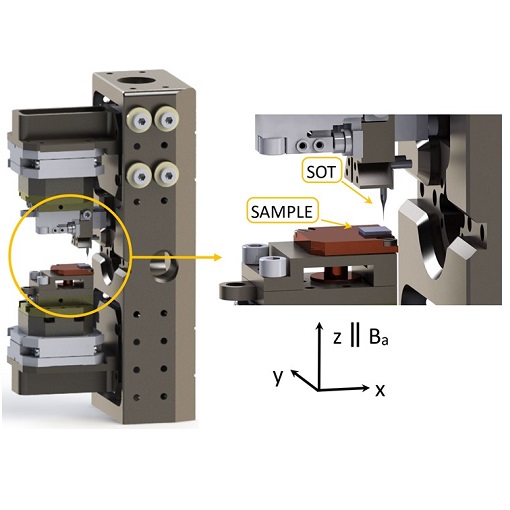To read a photoelectron spectrum, analyze the kinetic energy and intensity of emitted electrons. Photoelectron spectroscopy uses light to eject electrons from a sample’s surface, providing crucial information about its composition and electronic structure.
By understanding the photoelectron spectrum, scientists can determine the energy levels and chemical bonding present within the material. The data from the spectrum allows for precise identification of elements and compounds, aiding in various disciplines such as chemistry, physics, and material science.
Interpretation of the photoelectron spectrum involves assessing peak positions, intensities, and line shapes to unveil the material’s electronic properties, making it a vital tool in modern analytical and research applications. Understanding the fundamentals of photoelectron spectroscopy empowers researchers to extract valuable insights from spectral data, driving advancements across diverse scientific fields.
Mastering Photoelectron Spectrum Analysis
Understanding how to read and interpret photoelectron spectra is crucial for researchers and analysts in a variety of scientific fields. Mastering this skill opens the door to valuable insights into the electronic structure of atoms and molecules. In this post, we’ll delve into the core principles behind photoelectron spectroscopy, explore the vital equipment and setup needed for effective PES reading, and provide practical guidance for mastering the analysis of photoelectron spectra.
Core Principles Behind Photoelectron Spectroscopy (pes)
Photoelectron spectroscopy (PES) is based on the principle that when a material is exposed to light of sufficient energy, electrons are ejected from the material’s surface. The energies of these emitted electrons are then measured to provide information about the material’s electronic structure. This technique is used to study the energy levels and composition of elements and compounds, providing invaluable insights into their chemical and physical properties.
Vital Equipment And Setup For Effective Pes Reading
- Light Source: A high-energy light source, such as an ultraviolet (UV) or X-ray source, is essential for initiating the photoemission process.
- Energy Analyzer: A specialized instrument is needed to analyze the kinetic energies of the emitted electrons with high precision.
- Sample Chamber: A vacuum chamber is required to create a low-pressure environment and prevent interference from air molecules during the photoemission process.
- Data Acquisition System: Software and hardware for precise data collection and analysis are essential for accurate interpretation of photoelectron spectra.
Mastering the analysis of photoelectron spectra requires a comprehensive understanding of the underlying principles of photoelectron spectroscopy, as well as access to the necessary equipment and setup for effective PES reading. By gaining proficiency in these areas, scientists and researchers can unlock a wealth of information about the electronic structure and properties of diverse materials.
Reading The Photoelectron Spectrum
When reading a photoelectron spectrum, it’s vital to understand the key elements that make up the spectral data. By recognizing peaks and understanding the relationship between kinetic energy and binding energy, you can extract crucial information about the electronic structure and bonding in a molecule. This guide will walk you through these important aspects of reading a photoelectron spectrum.
Recognizing Peaks And Their Significance
One of the fundamental aspects of reading a photoelectron spectrum is the identification of peaks. Each peak corresponds to the energy required to remove an electron from a specific orbital within the molecule. The position and intensity of these peaks can provide insights into the electronic configuration and chemical environment of the atoms within the molecule. Higher intensity peaks typically indicate that the corresponding orbital is more energetically accessible, while peak positions can help in determining the ionization potential of different elements within the molecule.
Understanding Kinetic Energy Versus Binding Energy Plots
When analyzing a photoelectron spectrum, the plot of kinetic energy versus binding energy is of utmost importance. This plot allows you to visualize the distribution of electrons within the molecule based on their energies. The kinetic energy corresponds to the energy with which the photoelectron is ejected, while the binding energy represents the energy required to remove the electron from its orbital. By interpreting this plot, you can discern the nature of different electronic states and their relative energies within the molecule.
Techniques In Photoelectron Spectrum Interpretation
Interpreting a photoelectron spectrum involves analyzing the key features of the spectrum to extract valuable information about the electronic structure of a material. Understanding the techniques for interpreting photoelectron spectra is crucial for researchers and scientists in various fields, including materials science, chemistry, and physics. This article will delve into the essential techniques used in the interpretation of photoelectron spectra, shedding light on quantitative analysis of peak data and qualitative assessment of electronic structure.
Quantitative Analysis Of Peak Data
When examining photoelectron spectra, conducting a quantitative analysis of the peak data is essential for extracting precise information. This involves determining the kinetic energy of photoelectrons emitted from the material and correlating it with the energy levels of the electronic states within the material. By quantitatively analyzing the peak data, researchers can obtain valuable insights into the binding energies of electrons and the density of states in the material.
Qualitative Assessment Of Electronic Structure
Aside from quantitative analysis, a qualitative assessment of the electronic structure is equally important in photoelectron spectrum interpretation. This involves scrutinizing the shape, intensity, and position of the peaks in the spectrum to gain an understanding of the material’s electronic properties. Researchers can assess the chemical environment, bonding characteristics, and orbital hybridization by qualitatively analyzing the features of the photoelectron spectrum.
Enhancing Precision In Analysis
When analyzing photoelectron spectra, precision is key to obtaining accurate results. By enhancing the precision in analysis, researchers can gain deeper insights into the properties of materials and molecules, leading to advancements in various fields such as chemistry, physics, and materials science.
Calibration And Background Correction Methods
Ensuring the accuracy of the energy scale in a photoelectron spectrum is crucial for precise analysis. Calibration methods involve the use of known energy standards to align the spectrum to a reliable reference point. This step helps in accurately determining the kinetic energy of emitted electrons, thus enhancing the precision of the analysis.
Background signals in photoelectron spectra can often interfere with the accurate identification of peaks. Employing advanced background correction methods allows for the removal of spurious signals, thereby enhancing the precision of peak identification and quantitative analysis.
Advanced Software For Spectrum Deconvolution
Advanced software tools are available for deconvoluting complex photoelectron spectra, allowing for the separation and analysis of overlapping peaks with higher precision. These tools employ sophisticated algorithms to unravel the underlying contributions of individual electron binding energies, leading to more accurate quantitative analysis of the sample.
From Spectrum To Structure: Case Studies
Understanding how to read photoelectron spectrums is crucial for deducing the structural and chemical properties of compounds. Case studies provide real-world examples that enhance the application of this technique, shedding light on the intricacies of interpreting spectral data to determine molecular structures and bonding configurations. Let’s explore some real-world examples of photoelectron spectrum reading and how case studies contribute to improving the application technique.
Real-world Examples Of Photoelectron Spectrum Reading
Reading photoelectron spectrum involves deciphering the energies of electrons emitted from a material due to the photoelectric effect. Through analysis of peak positions and intensities, researchers can unravel valuable information about the electronic structure of the material under investigation. Listed below are a few instances illustrating how photoelectron spectrums reveal insightful details:
- Determination of chemical bonding in organic molecules
- Identification of oxidation states in transition metal complexes
- Evaluating the electronic properties of semiconductor materials
How Case Studies Improve Technique Application
Case studies serve as invaluable tools for refining the application of interpreting photoelectron spectra. By examining specific instances where spectral data elucidated molecular structures, researchers can gain a deeper understanding of the intricacies involved. These case studies not only reinforce theoretical concepts but also equip practitioners with the practical knowledge required to effectively employ this analytical method.
How To Read Photoelectron Spectrum: Mastering Analysis Techniques
Are you trying to decipher the mysteries hidden within the photoelectron spectrum (PES)? Mastering the art of analyzing the photoelectron spectrum can be a daunting task, but fear not – with the right approach and techniques, it can be conquered. Let’s delve into the intricate world of PES and uncover the strategies for mastering analysis techniques.
Integration Of Methods Into A Systematic Approach
Understanding how to read a photoelectron spectrum involves integrating various methods into a systematic approach. By structuring the analysis process, you can effectively decipher the wealth of information embedded within the spectrum. The key is to segment the spectrum into manageable components, allowing for a methodical examination of each aspect.
Strategies For Staying Current With Pes Advancements
To master the analysis techniques of a photoelectron spectrum, it’s crucial to stay abreast of the latest advancements in the field. Embracing continuous learning and staying current with technological developments is imperative. By regularly engaging with scholarly literature, attending relevant conferences, and collaborating with experts, you can ensure that your analytical skills remain razor-sharp.

Credit: www.attocube.com
Frequently Asked Questions For How To Read Photoelectron Spectrum
What Is A Photoelectron Spectrum?
A photoelectron spectrum is a graph showing the energies at which electrons are ejected from a material when illuminated by ultraviolet radiation.
How To Interpret A Photoelectron Spectrum?
To interpret a photoelectron spectrum, analyze the peaks to determine the binding energy of electrons in the material, which provides valuable information about its molecular structure.
What Are The Applications Of Photoelectron Spectra?
Photoelectron spectra are used in various fields, including chemistry, physics, and materials science, to identify elements, understand bonding, and study electronic structures.
Conclusion
Understanding photoelectron spectra can be a valuable skill for scientists and researchers. By analyzing the energy levels of electrons, valuable insights into molecular structures can be gained. With the knowledge gained from this blog post, readers can confidently navigate and interpret photoelectron spectra to further their understanding of chemical systems.

